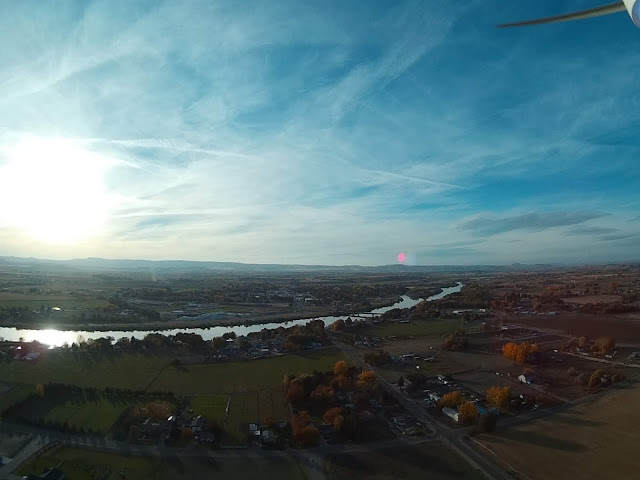I learned that Forest Mims authored an article in the October 2011 (pages 1311 - 1319) issue of the Bulletin of the American Meteorological Society (BAMS). The article is on using an infrared thermometer to measure the total column of water vapor overhead (also known as preciptable water or PW). Since water vapor is a greenhouse gas, the more of it overhead, the warmer the sky temperature measured by the infrared thermometer.
So I decided last spring to try this out for myself with my Seek Reveal thermal imager and see what I get. If successful, then I could start recording the amount of water vapor overhead as part of my amatuer science activities. I could also experiment with measuring PW as changes in weather approached.
The only problem I encountered was finding a website were I could get the current PW value. A little searching turned up the Unisys weather website (http://weather.unisys.com/current-weather?source=4&plot=97&inv=0&t=cur). If I select the Precipitable Water channel, I was given a map of PW values across the US like the one below.
Now, there's some interpretation to get the PW value for a location. So I expected some variation in the data just due to reading a chart. There's a second source of variation that I learned about more recently. That's that the data is only updated every 12 hours at around 7:45 AM and PM my time. So any measurements taken away from those times will not be accurate.
I started collecting my data last April and changed my procedures to only record data at around 8:00 more recently. The data was loaded into a spreadsheet and graphed per the instructions in Mr. Mims' article. A best fit line that was exponential was added as a trendline and it's equation displayed on the chart. Below is what my raw data looks like.
The R-squared value or coefficient of regression of 58.7% was not as high as I hoped and it comes from the data points that are far away from the line of best fit. Since I know some of the variation comes from taking data at bad times, I decided to remove the outliers to see what I get. The edited data is displayed below.
The updated regression coefficient of 81.2% is much more acceptable. And the regression equation of PW = 1.1985*e^temp is not much different from the raw data equation.
This equation for inches of PW works for my Seek Reveal if the temperature is in units of degrees Fahrenheit. Other imagers will need to generate their own equation.
I plan to collect data for a year before I start using my imager to collect PW data. Then I plan to see how PW changes as rainy weather approaches.
Thanks Mr. Mims for letting know about your article.



































